How to Set Up a Drum Set in 6 Steps
How to Set Up a Drum Set in 6 Steps:
An important buzzword when setting up a Drum Set is ergonomics. An ergonomic Drumset allows us to play as relaxed as possible without unnecessary tensions. It also prevent us from developing bad posture. An ergonomic Drum Set and a loose, efficient technique also helps to develop better timing and sound!
1. The right Seat height
Sit upright on the drum stool! Try to position your legs symmetrically in a V-shape. Next, lift your heels! Now adjust the height of the stool so that your thighs are aligned slightly with your heels lifted and parallel to the floor at least. If your thighs point upwards, you´re definitely sitting too low! In the long run this can lead to back problems among other thins. A highter seating position is not a problem. Jazz drummers usually sit a little higher, but ultimately this is down to personal taste and you should experiment with it!
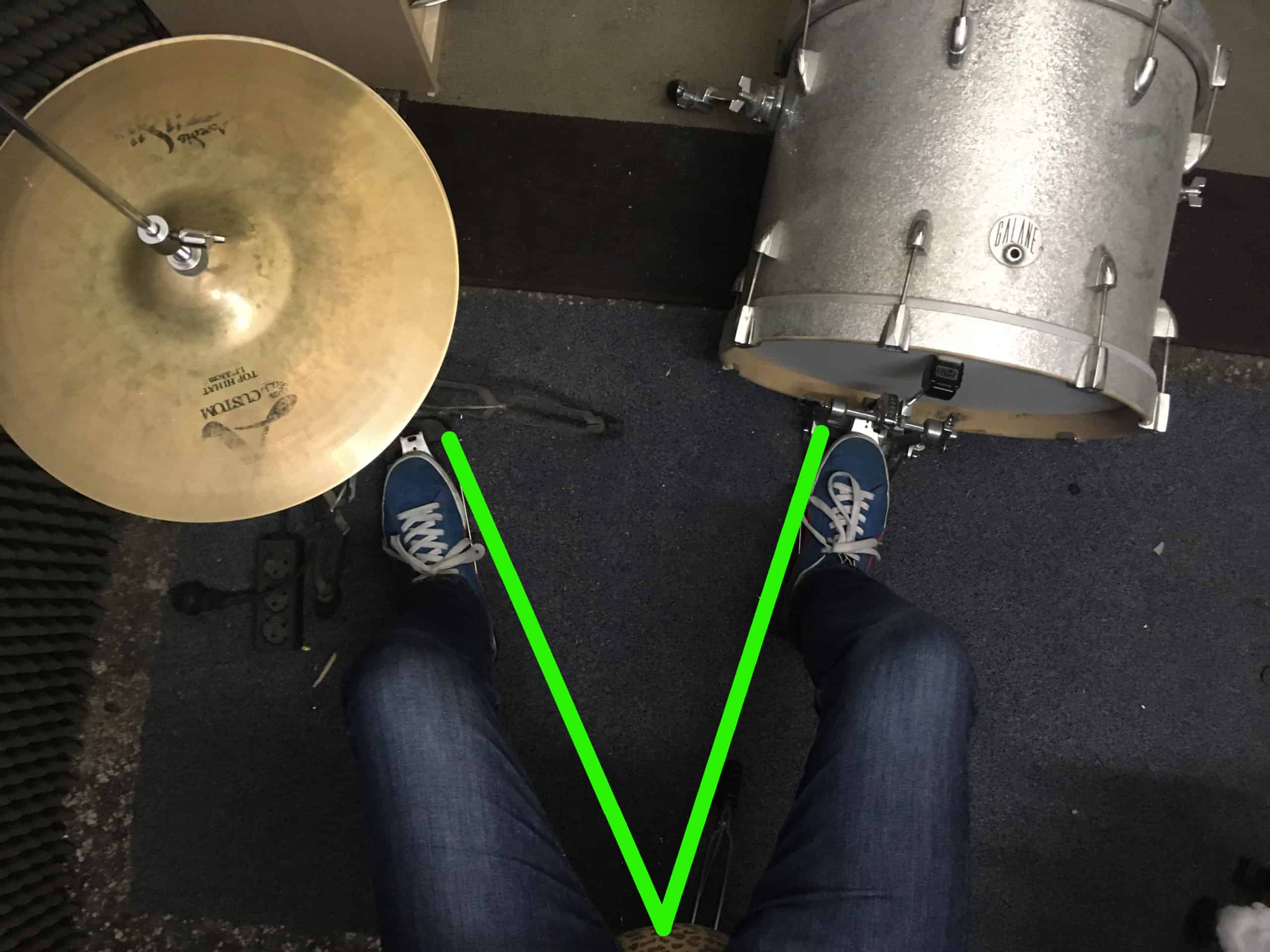
Symmetrical V-shaped position of the legs.
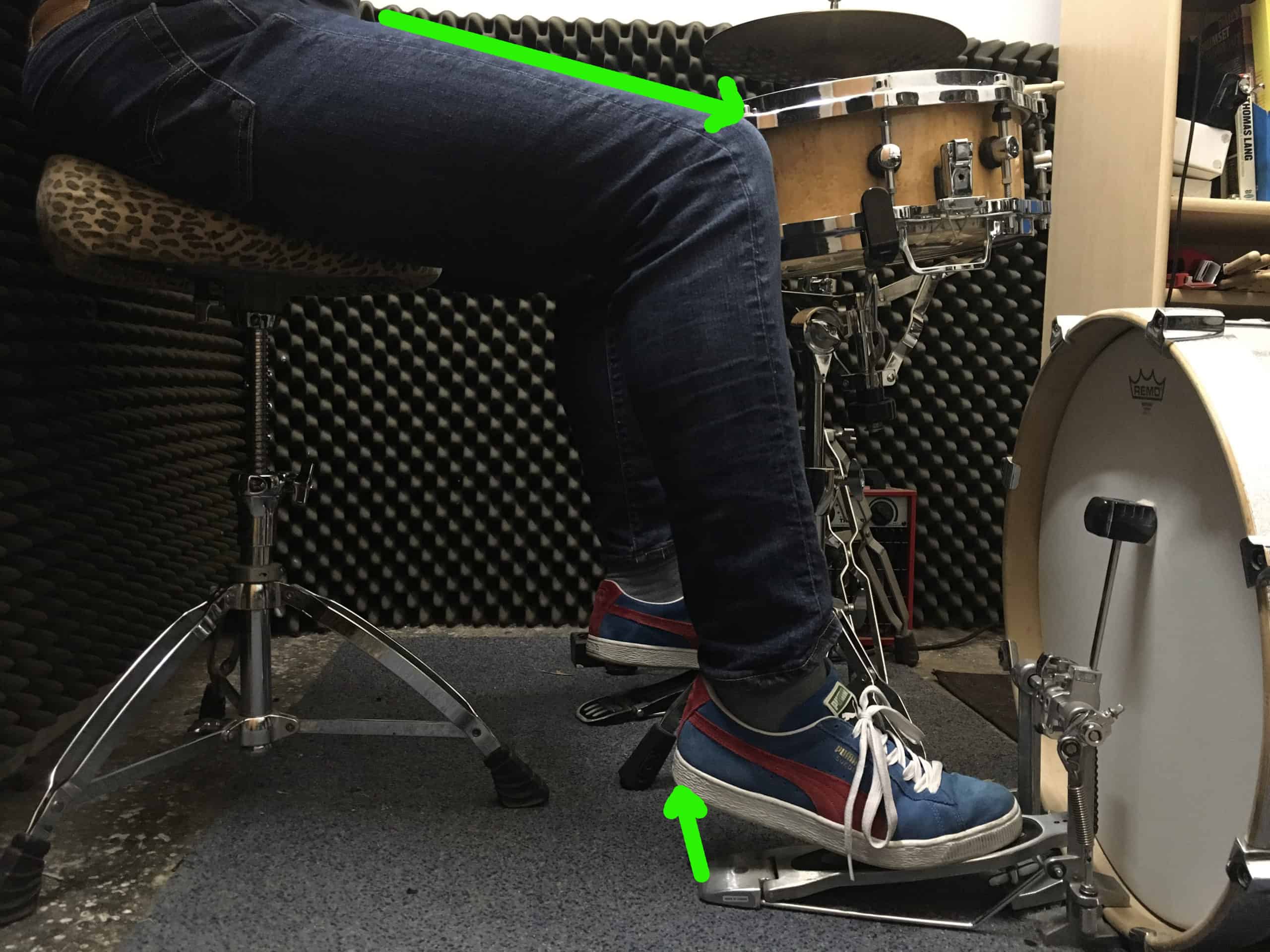
Slightly downward thighs with heels lifted at the same time. When playing with hands and feet at the same time, this ensures that they do not touch each other!
2. Snare Drum position
Next I set the position of the snare drum. The snare drum should stand right in front of you. Now grab your drumsticks and go into the basic Hand position (matched or traditional grip). Let your arms and shoulders hang and avoid any tension. The height of the snare drum should be chosen so that your forearms are roughly parallel to the floor in this basic position.
The tips of the sticks should point in the middle of the drum. If the tips are above or below the center of the drumhead while your arms hanging loosely, you are either sitting too close or too far away from the snare drum. If you play with traditional grip the drum should be slightly tilted towards the left hand. The traditional grip comes from a time when the snare drum was mainly used in military music. The drum was carried with a strap, which meant that it was in a sideways tilted position. If you would use matched grip in that position it would feel pretty awkward. The solution was the traditional grip in which the left hand is under the stick and the sideways inclined drum can still be played with relaxed hanging shoulders.
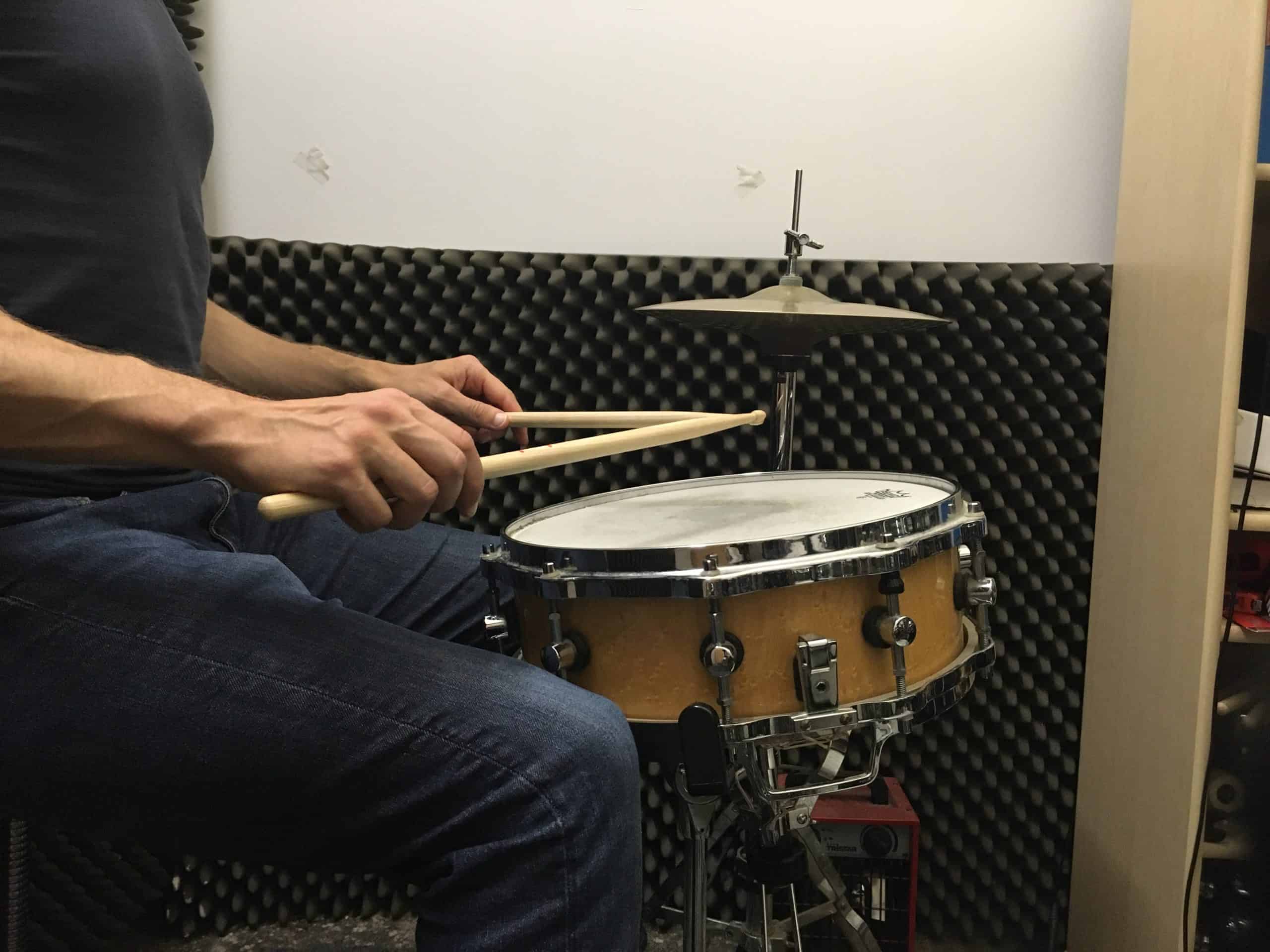
Matched Grip
Your forearms should be roughly parallel to the floor. If they point upwards the snare drum is set to high!
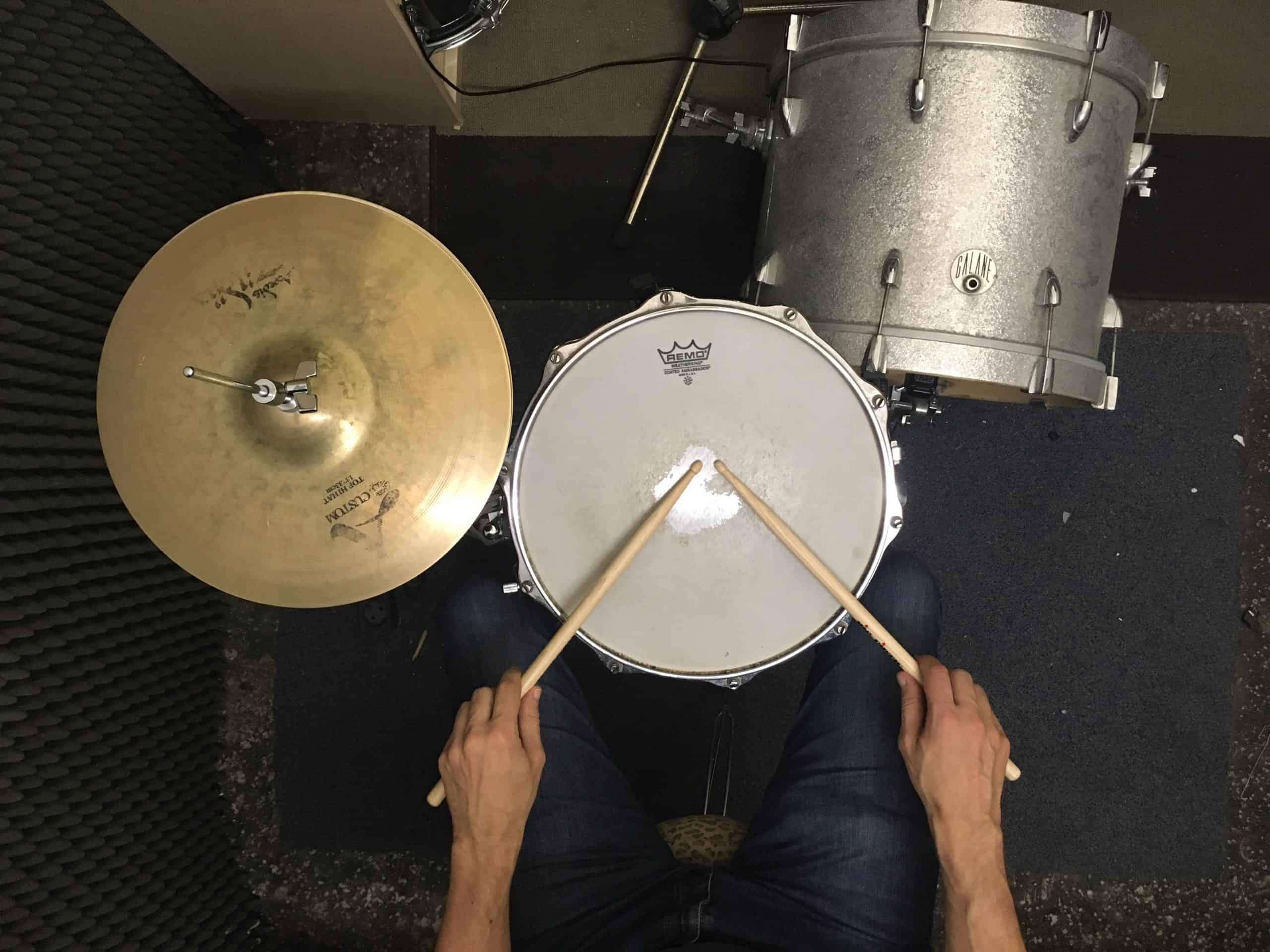
Matched Grip from a bird´s eye view.
3. Position of the Pedals
After the seat height and the snare drum position have been set correctly, we now turn our attention to the Bass Drum and the HiHat. The pedals and the bass drum must stand on a carpet so that nothing slips away while playing!
To repeat: Sit upright on the drum stool! The snare drum stands in the middle in front of you while the tips of the sticks are in the middle of the drum with your shoulders relaxed. Your feet are in a symmetrical V-shaped position.
This V-shaped position is exactly where the bassdrum and HiHat pedals should be. Above all, make sure that you don´t sit too close to the bass drum and HiHat. The front of the bass drum must not touch the floor! Also note that the angles drawn in the first image below are at least 90 degrees.
If you are using a double pedal for the kick drum, position the left kick drum pedal to the right of the HiHat pedal. The HiHat has to deviate a little to the left.
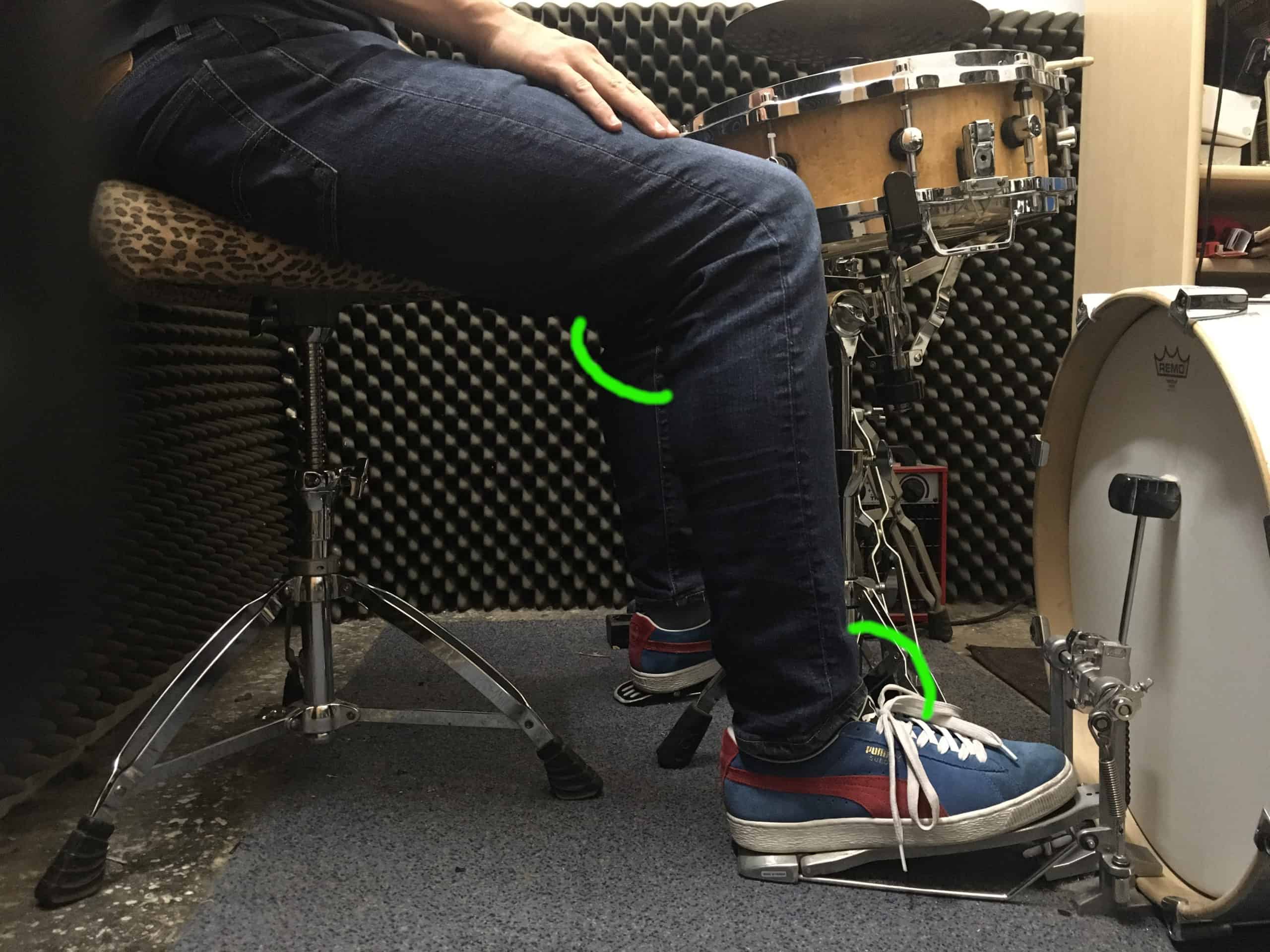
Note that the angles drawn in the image are at least 90 degrees. Otherwise the seat height is too low or you are sitting too close to the bass drum.

Symmetrical V-shaped position of the legs.
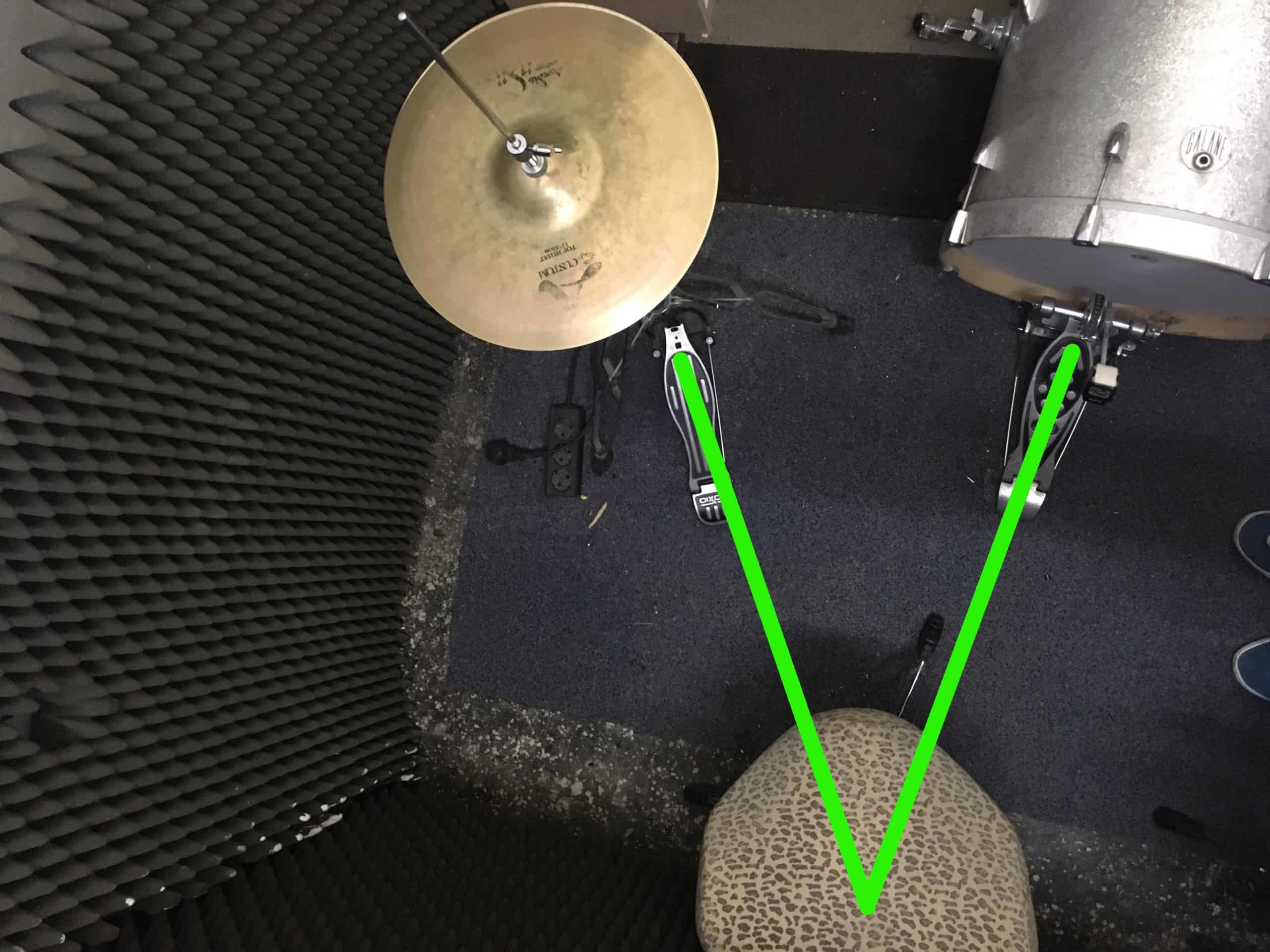
Correct V-shaped position of the pedals.
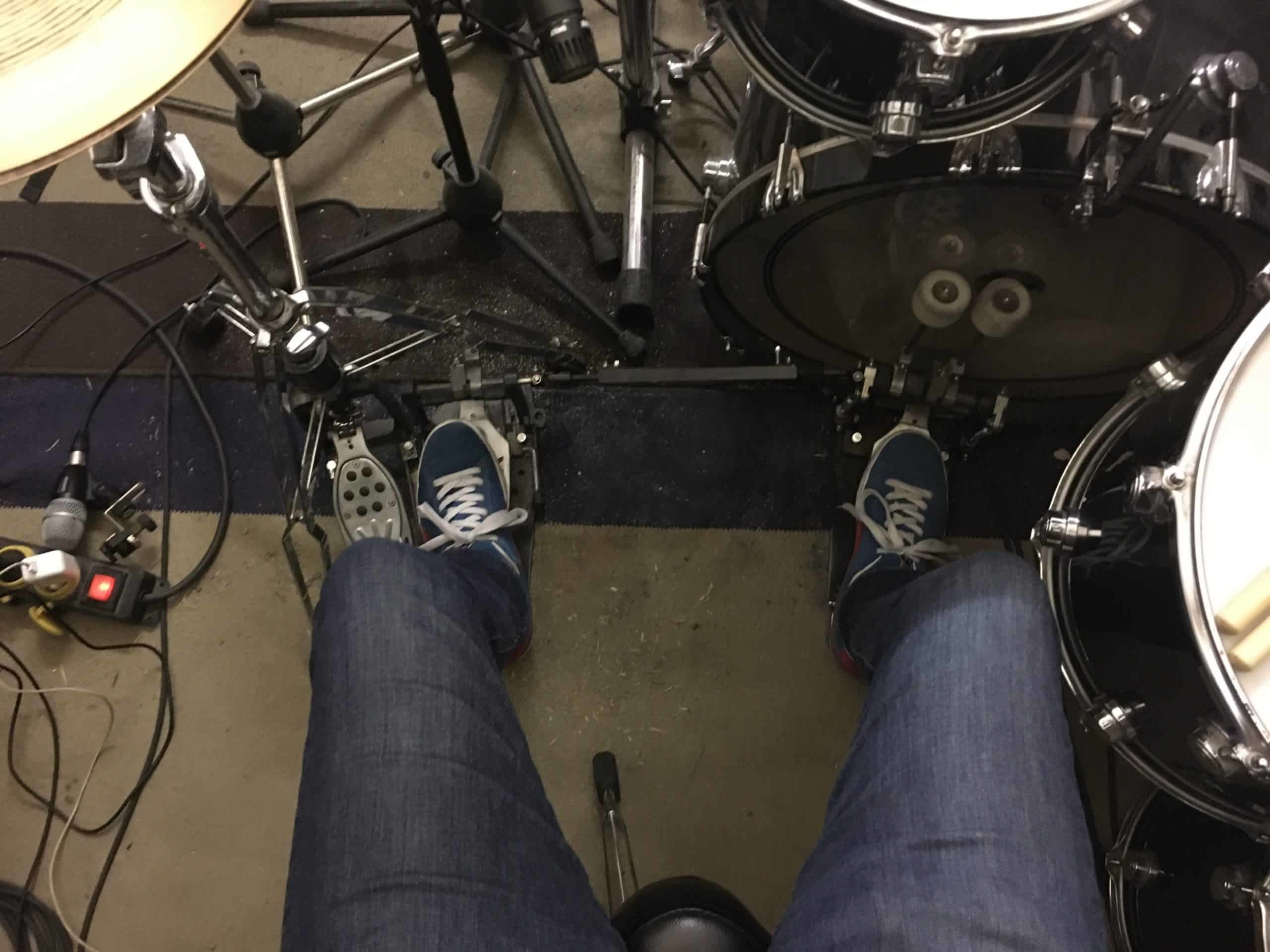
When using a double bassdrum pedal the HiHat must stand a little further to the left.
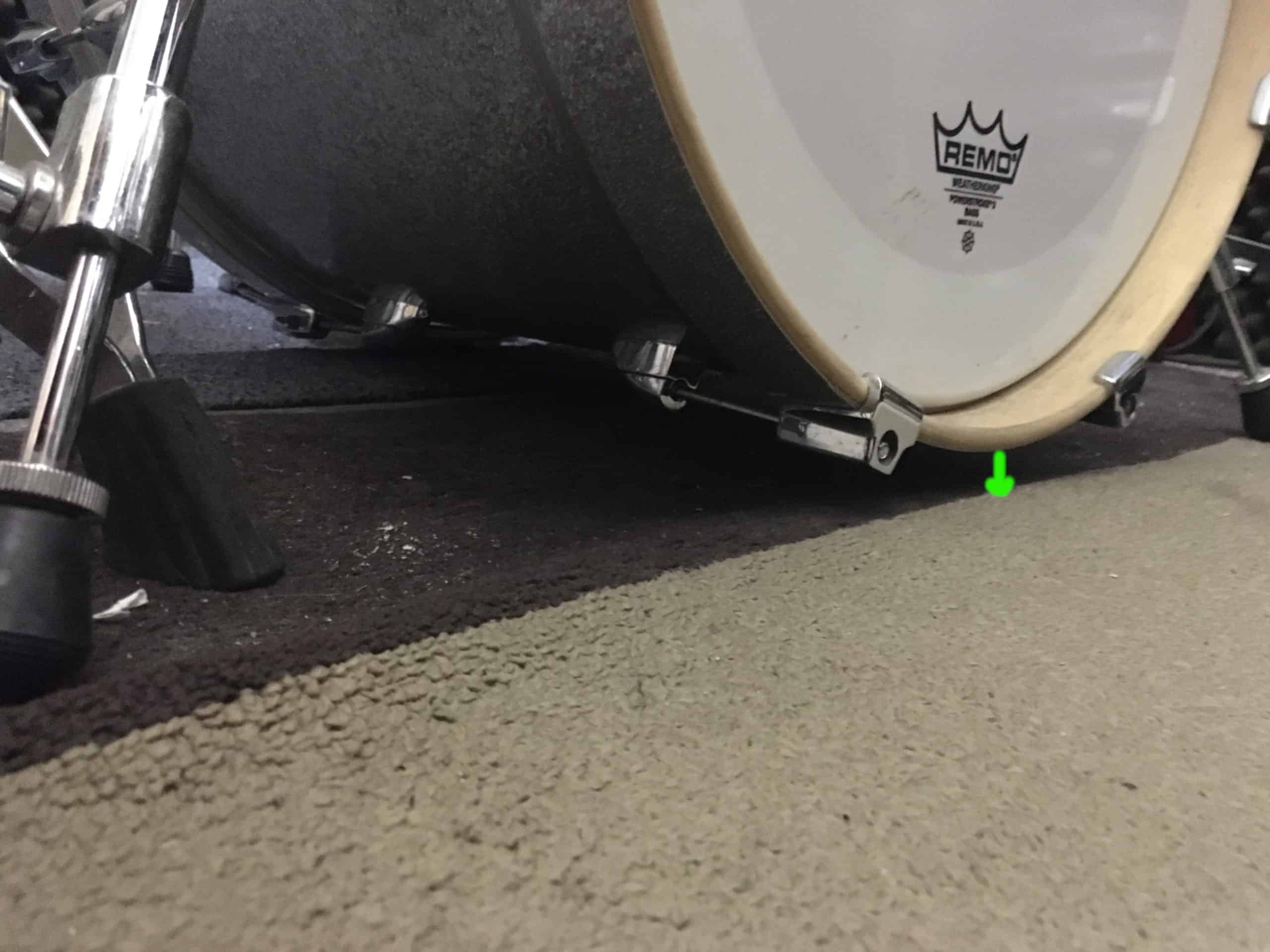
The front of the bassdrum should not touch the floor. The bassdrum feet can be used to adjust the height of the bassdrum.
4. Position of the HiHat
You are back in the basic posture in an upright sitting position in front of the snare drum. Now place your right hand over your left so that when you look down at your hands, the sticks form a cross. The following pictures should help to find the correct position of the hands. Not every drummer uses the exaxt same position here! It also depends a lot on individual physique and playing style which positons work best.
The height of the HiHat should be chosen so that you have enough space to play a solid backbeat on the snare with your left hand. When playing very loudly, the HiHat can be set a little higher to create more space for the left hand.
Many Rock Drummers tend to have the HiHat set higher, while Jazz Drummers generally set the HiHat lower. All open-handed players can also position the HiHat lower. Personally, I set the distance between the two HiHat Cymbals to about 3 cm.

Matched Grip
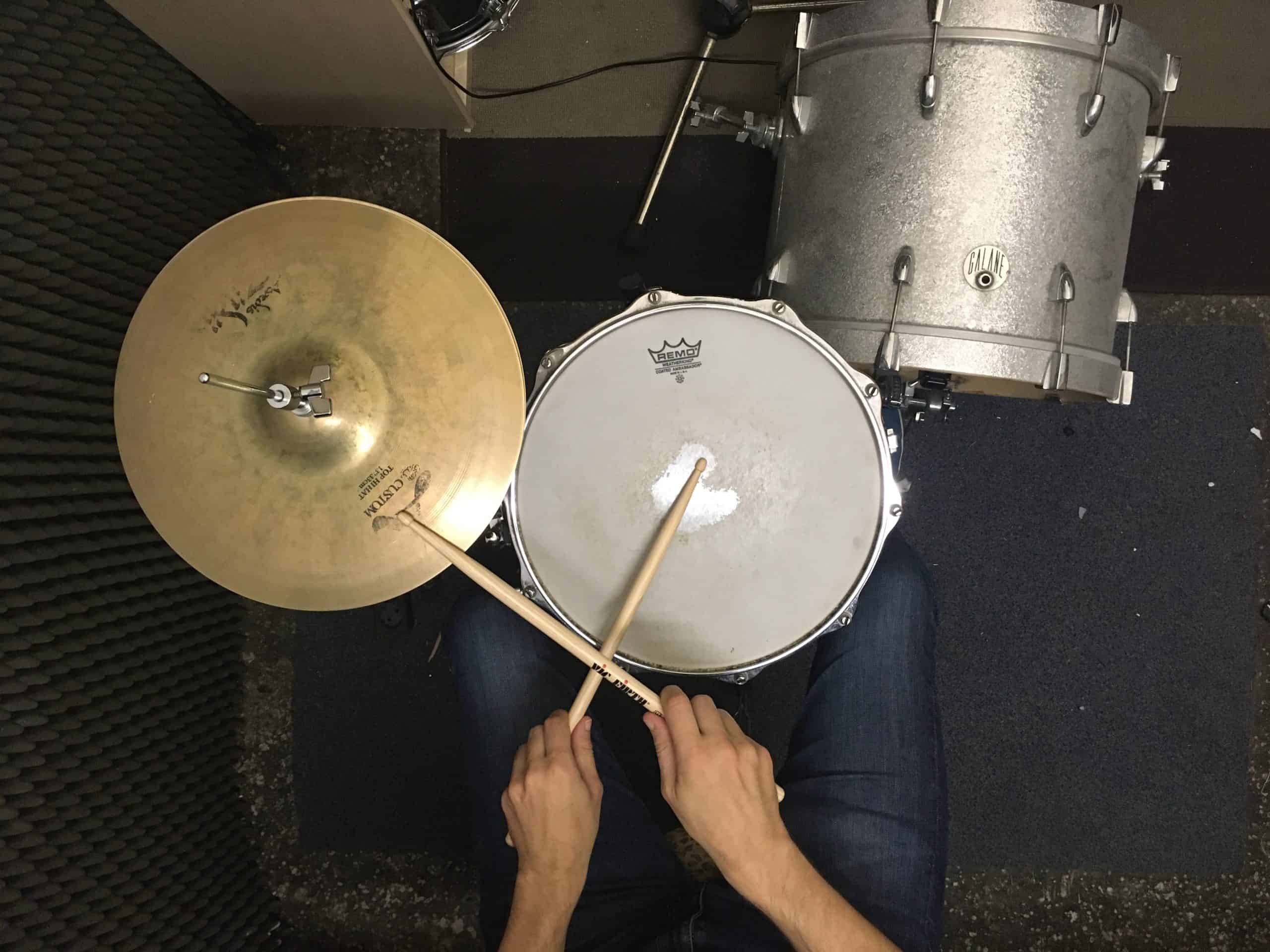
The right hand plays the HiHat with the sticks crossed. The right hand should not be over the left stick.
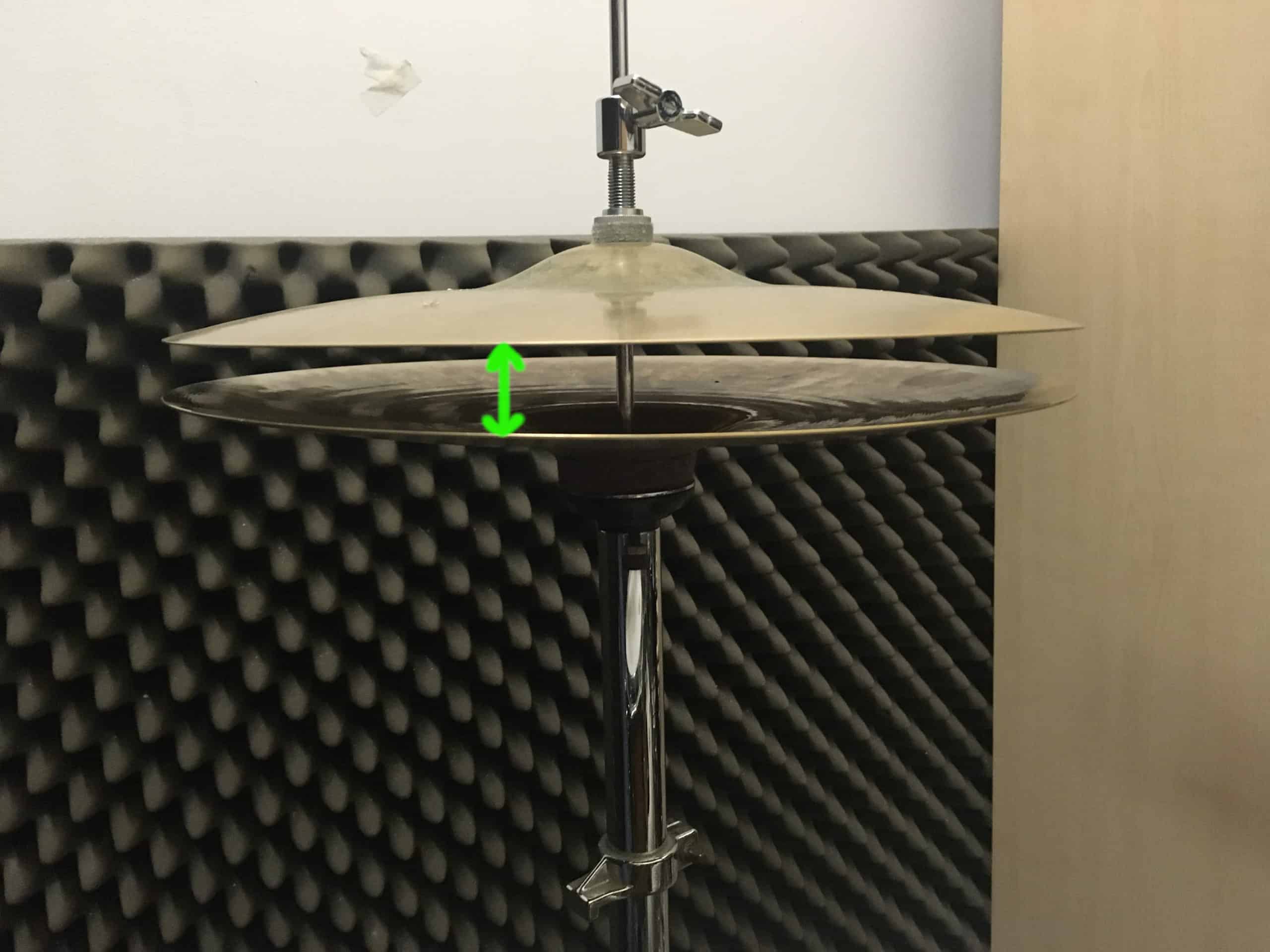
I personally use a distance between the HiHat Cymbals of about 3 cm.
5. Position of the Toms
Next, let´s have a look at the Toms. Again starting from the basic position on the snare drum we now position the hands over the snare where the smallest tom should hang. Personally, I tilted the hanging toms slightly towards me. There are also drummers who position the toms completely flat. It’s always best to experiment with different angles!
The toms should always be easily accessible without hitting the rims while playing. After the first tom is mounted correctly, turn your body to the right in the basic posture. The second tom is to the right next to the first tom. In the basic position, the tips of the sticks automatically point over the middle of the drumhead without having to stretch out your arms any further. The third tom is parallel to the right of the snare. Again, the distance to the body should be chosen so that when you move your body to the right towards Tom 3, the sticks point directly over the middle of the drumhead.
The fourth tom is to the right next to the third tom. Again, the same procedure applies here.
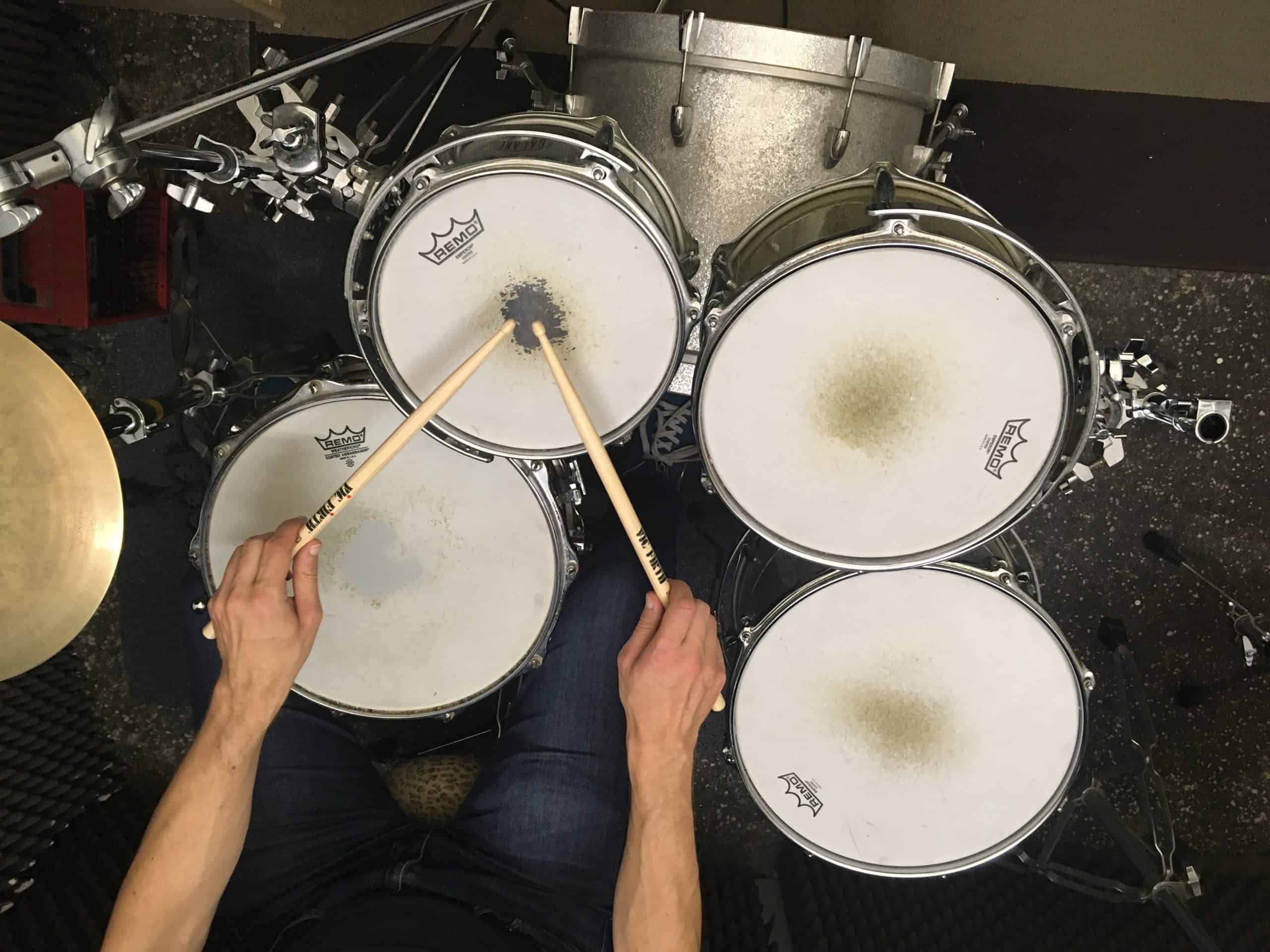
Set up a Drum Set: Tom 1
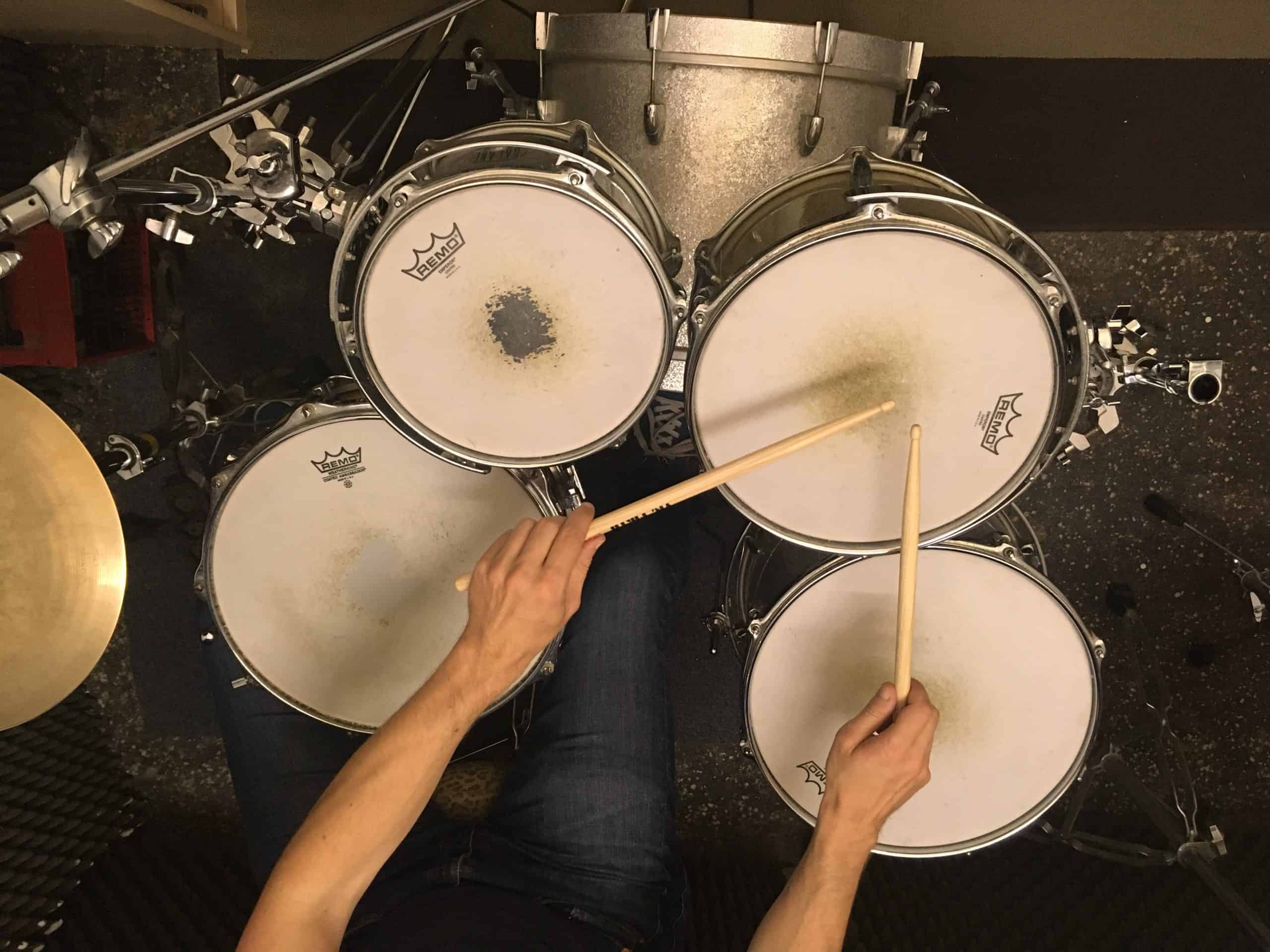
Set up a Drumset: Tom 2
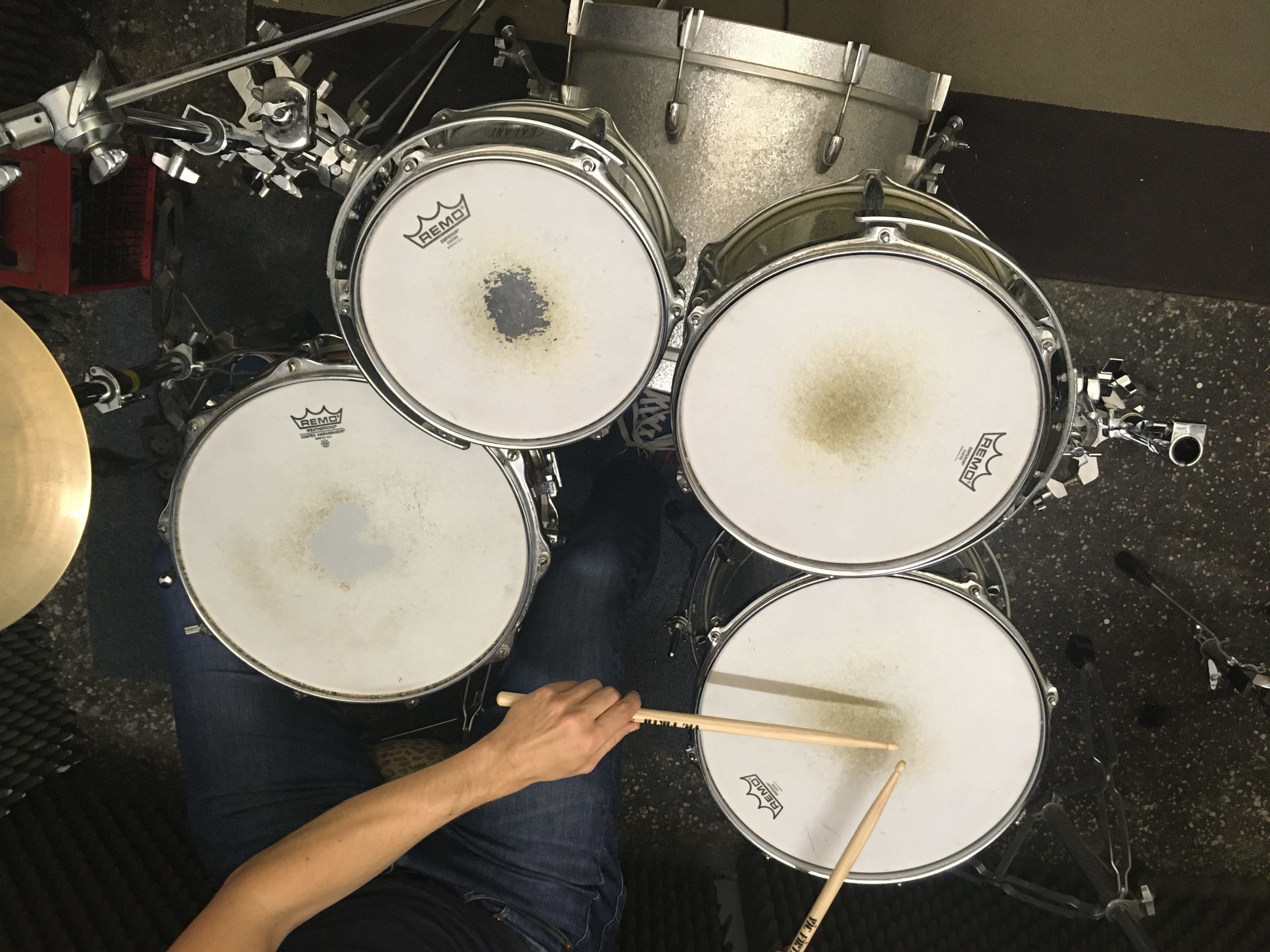
Set up a Drum Set: Tom 3
6. Position of the Cymbals
The last step in setting up the drumset deals with the cymbals. I start with the ride cymbal. I position the ride cymbal so that it is close enough that I can still easily reach the cymbal bell with the shoulder of the stick.
The ride cymbal hangs slightly above the second and third tom. I adjust the height so that I can play the cymbal with loosely hanging shoulders. It should still be possible to crash the cymbal without the cymbal touching the toms.
Finally, I attach the crash cymbals. The height of the crash cymbals also depends on the style of music played. In jazz, the crash cymbals are usually positioned very low, close to the toms, while in rock music they are often positioned much higher.
For beginners, it is particularly important that the crash cymbals are slightly tilted towards the player. The crash cymbals should be easily accessible and not in the way when playing the toms.
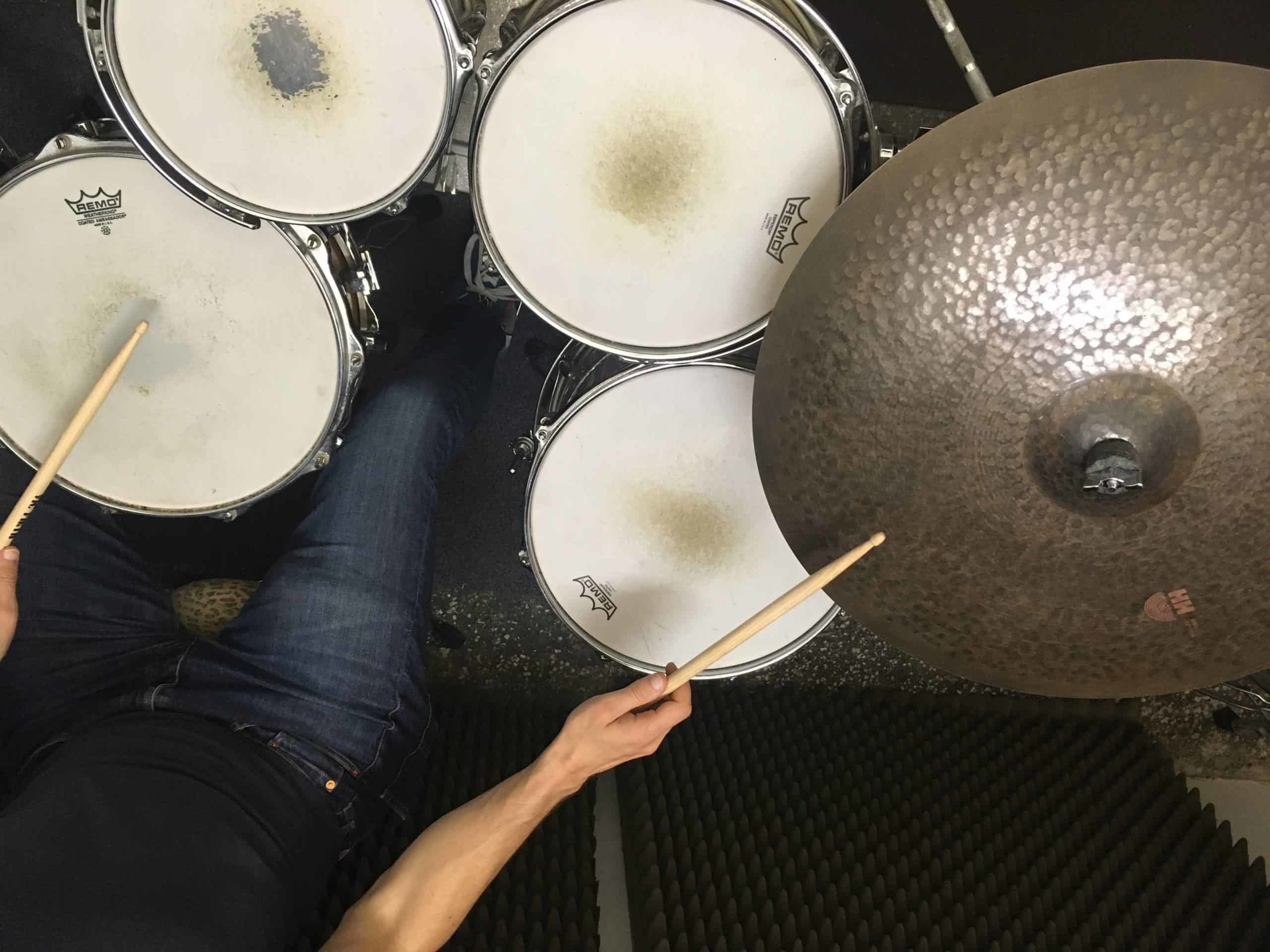
The ride cymbal should be easily accessible with the right hand. The height of the cymbal should be chosen so that you can still crash it with the shoulder of the stick without it touching the toms.
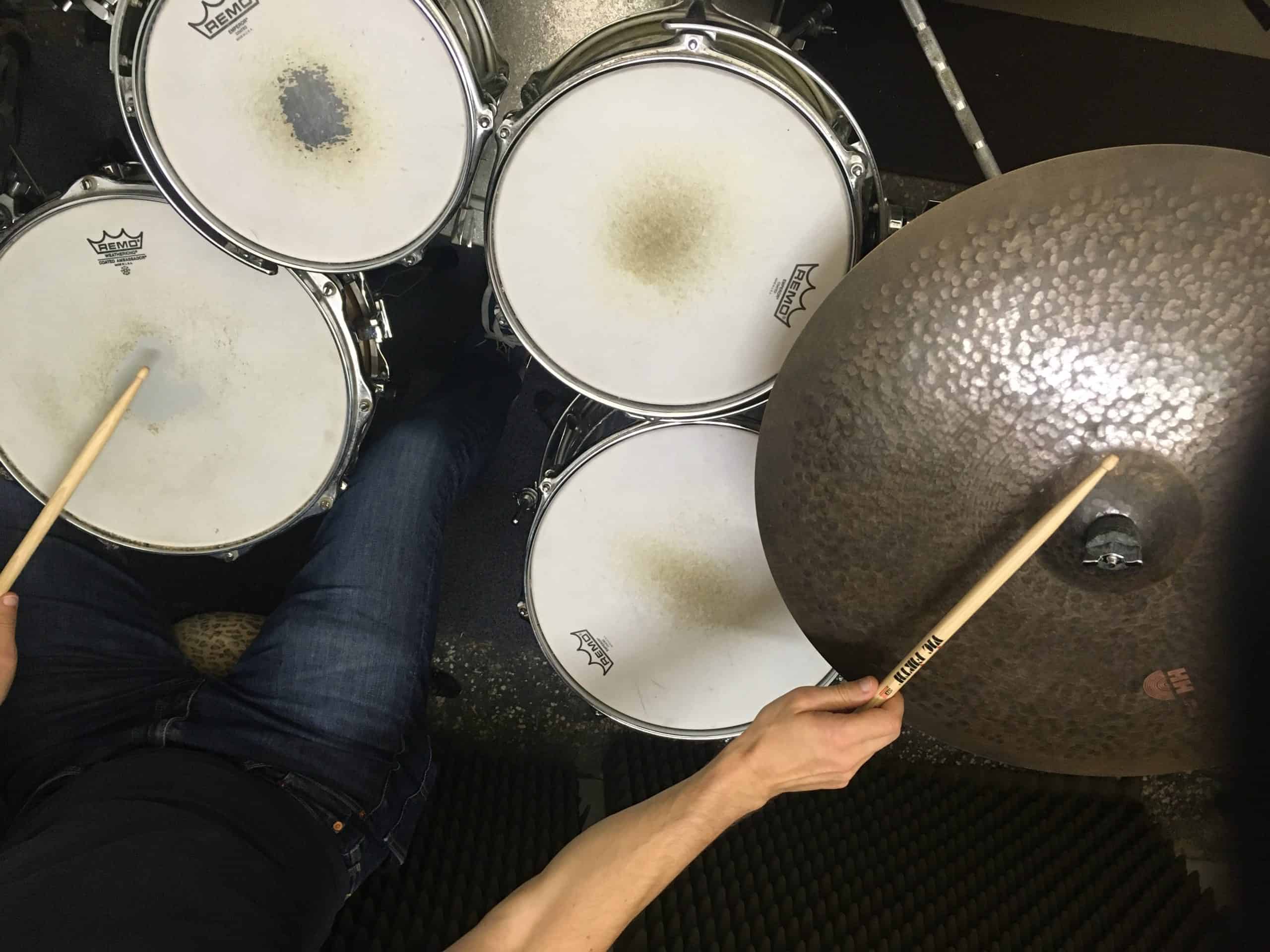
Make also sure that the cymbal bell is easily accessible.
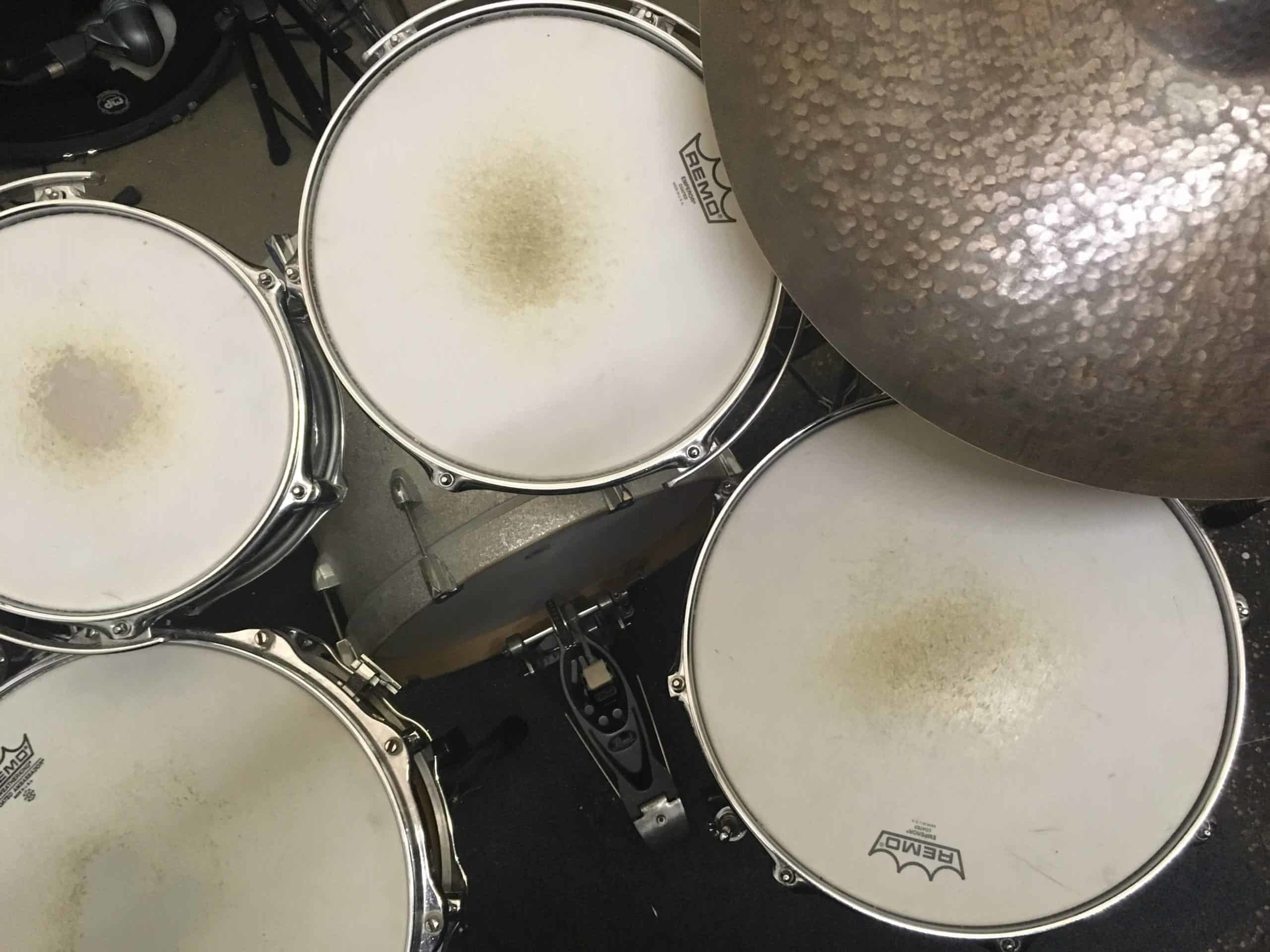
Part of the ride cymbal can also hang above the toms.
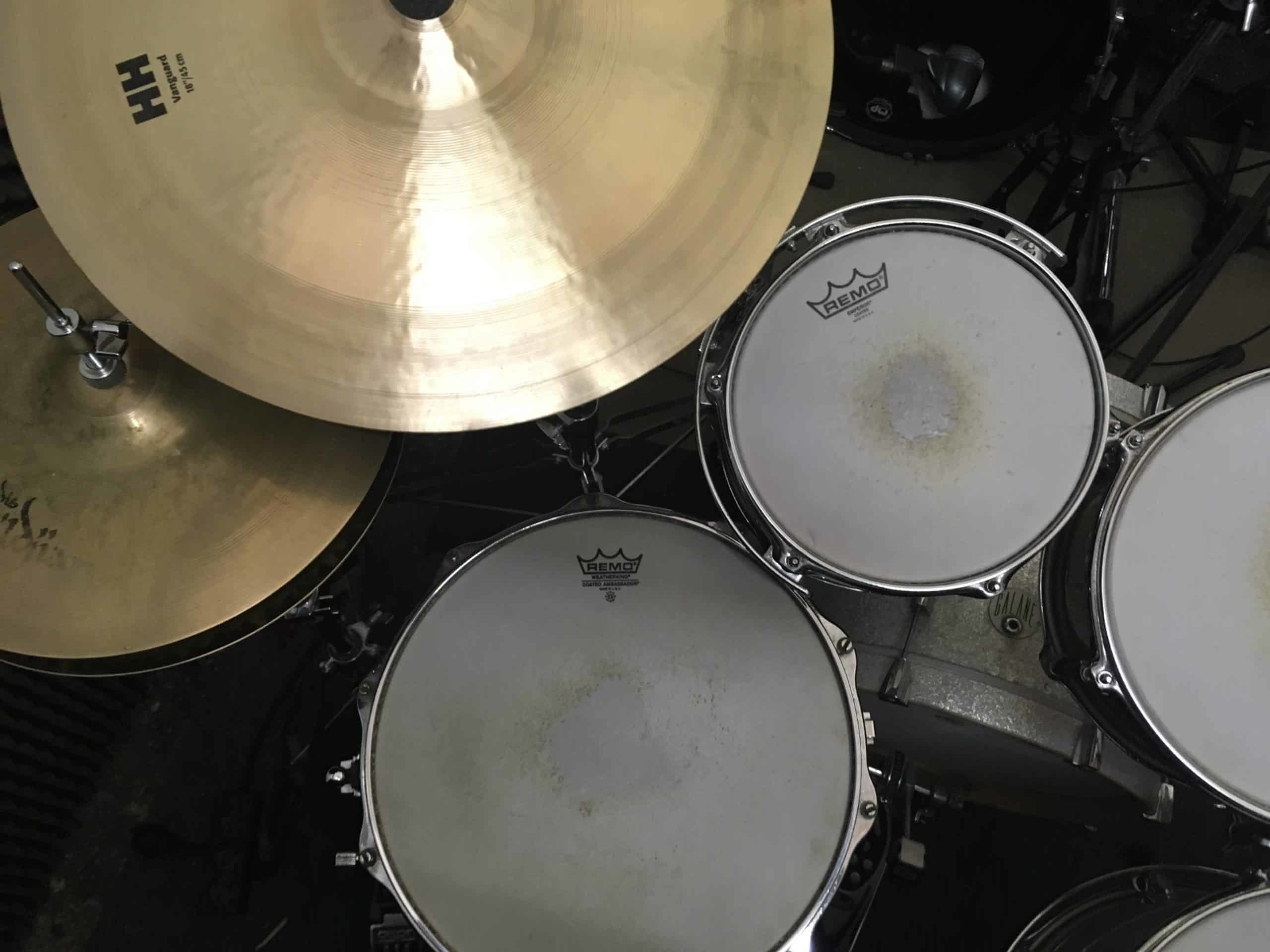
Left Crash Cymbal
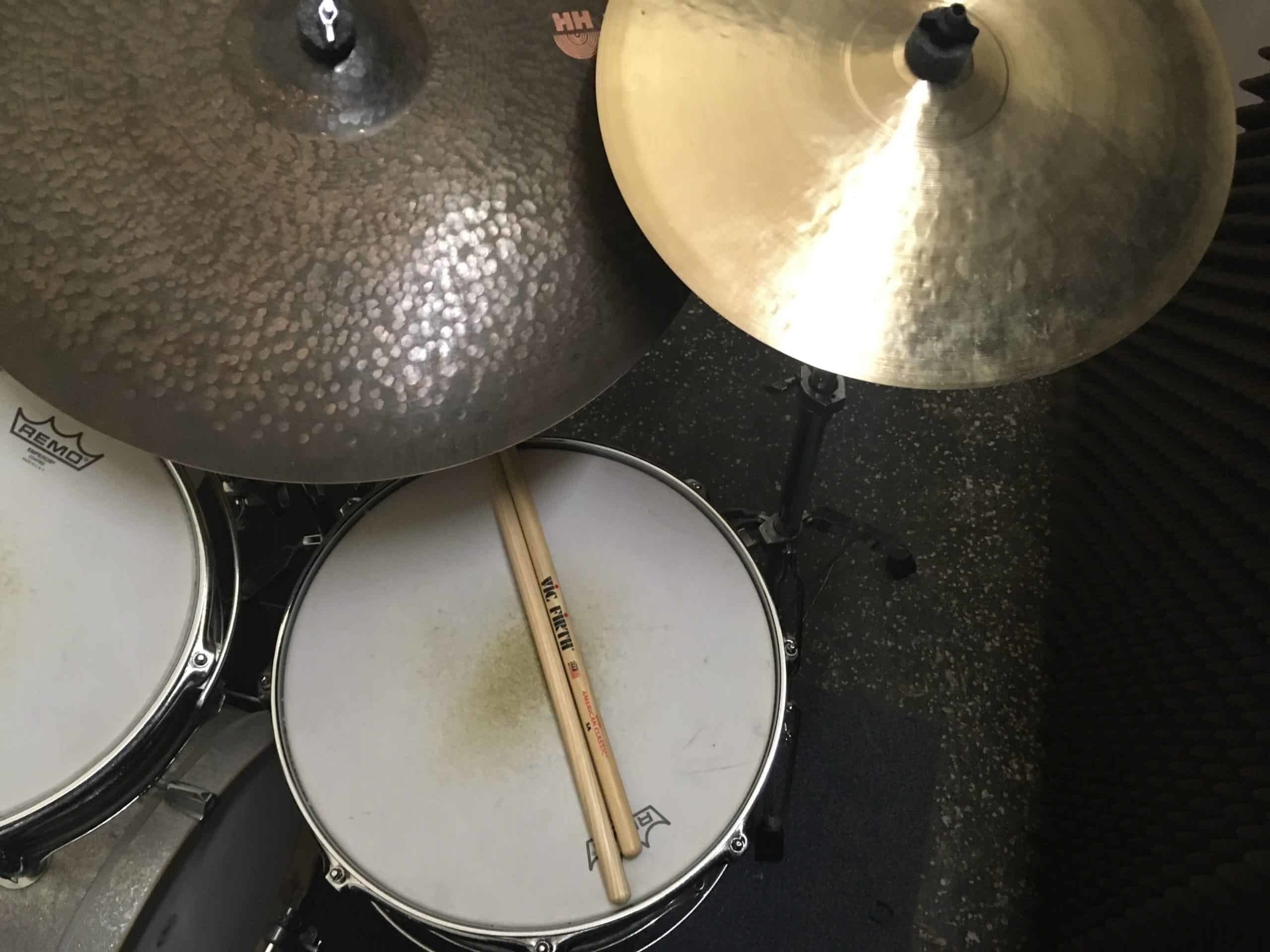
Right Crash Cymbal
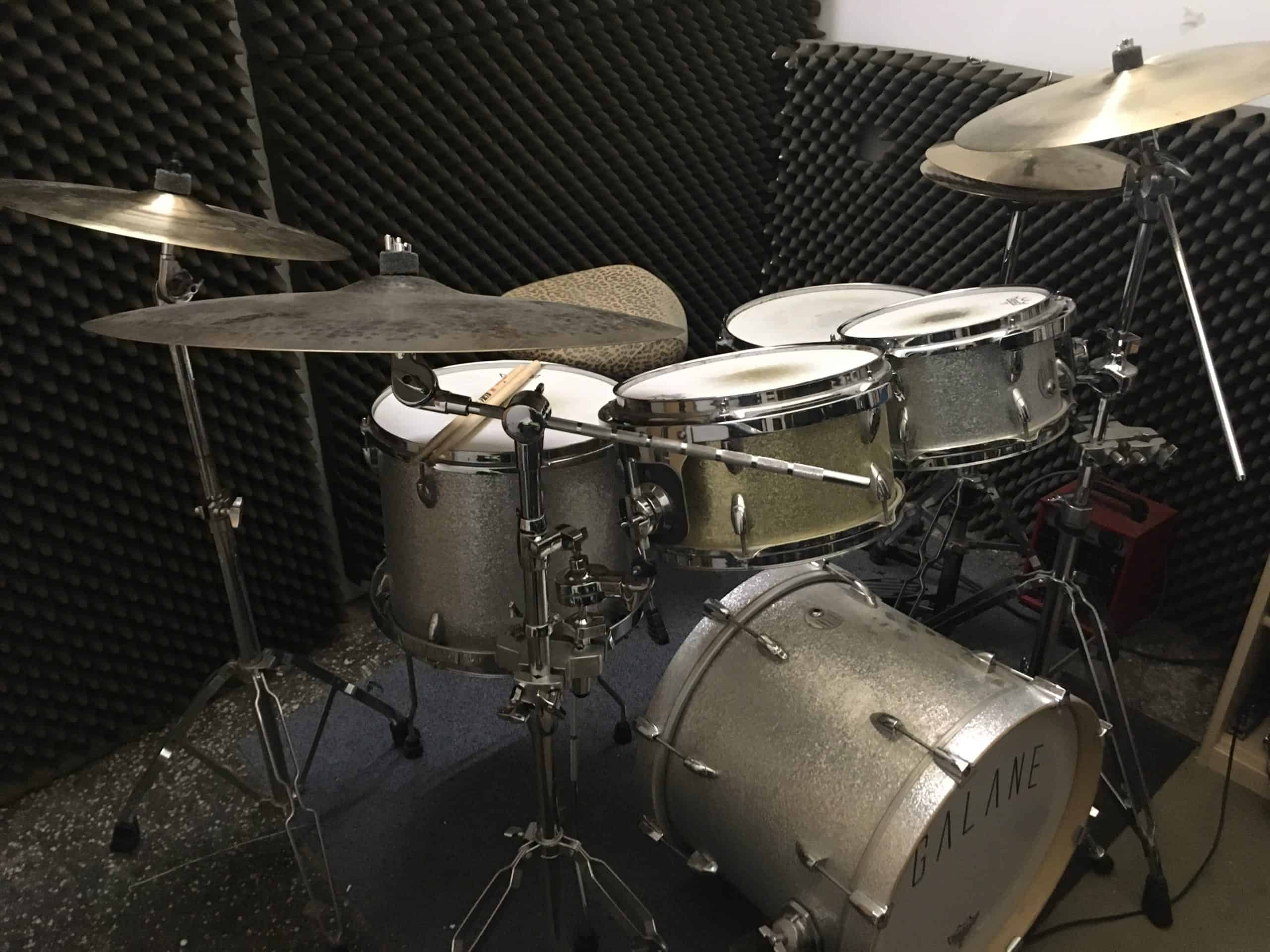
The drum kit is now perfectly adjusted to your height. All drums and cymbals should now be easily accessible.
Not every drummer uses the same concept when setting up the drums. You can also see well-known drummers who, in my opinion, have not adjusted their drums to be ergonomically perfect. As a drummer, you should always experiment with different setups. The procedure I have described here has always worked best in my experience as a working drummer.
It often happens that you can’t use your own drums for live performances. Usually every drummer has his snare drum, a bass drum pedal and his cymbals, which are exchanged during a short break. Here you should at least find the time to adjust the seat height, the snare drum and the hihat.

About the author:
Mag.art. Florian Stöger
- IGP – Jazz drums/percussion instrumental studies at the university of music and performing arts in Vienna. Jazz drum lessons with Manfred Krenmair, Prof. Fritz Ozmec and Prof. Mario Lackner, classical percussion lessons with Prof. Oliver Madas.
- Guest Student at the Musicians Institute in Los Angeles/Hollywood.
- Private lessons and Masterclasses with: Thomas Lang, Jojo Mayer, Bernard Galane, Dave Elitch, Gorden Campbell.
- Many years of teaching expierience: Drum teacher at the Musik- und Kunstschule Waidhofen an der Ybbs, VHS Heiligenstadt and Borg Krems an der Donau. Since 2020 Drum I am the drum teacher at Borg St. Pölten.
- Many concerts with Coverbands und songwriters different musical styles.
- Teacher at the Vienna Drum School